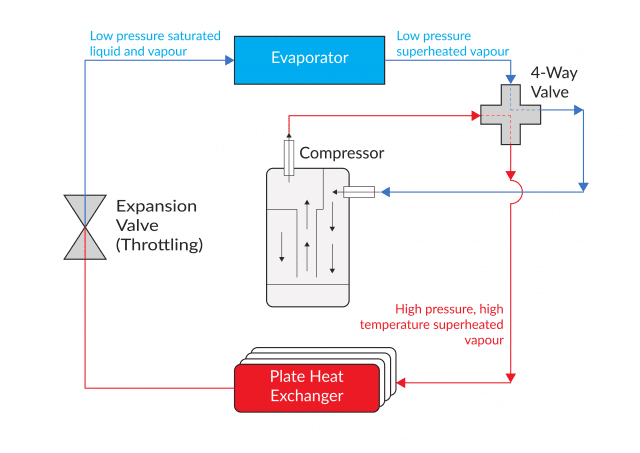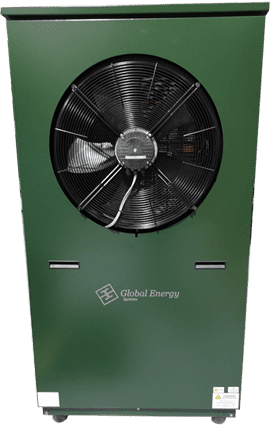A heat pump is an electrical device that extracts heat from one place and transfers it to another. The heat pump is not a new technology; it has been used around the world for decades. Refrigerators and air conditioners are both common examples of this technology.


How Does an Air Source Heat Pump Work?
- Heat pumps transfer heat by circulating a substance called a refrigerant through a cycle of evaporation and condensation.
- A compressor pumps the refrigerant between two heat exchanger coils. In one coil, the refrigerant is evaporated at low pressure and absorbs heat from its surroundings.
- The refrigerant is then compressed en route to the other coil, where it condenses at high pressure. At this point, it releases the heat it absorbed earlier in the cycle.
- Refrigerators and air conditioners are both examples of heat pumps operating in the reverse (cooling) mode. A refrigerator is essentially an insulated box with a heat pump system connected to it.
- The evaporator coil is located inside the box, usually in the freezer compartment. Heat is absorbed from this location and transferred outside, usually behind or underneath the unit where the condenser coil is located.
- Similarly, an air conditioner transfers heat from inside a house to the outdoors.
- Heat pumps can provide year-round climate control for your home. Since the air outside always contains some heat, a heat pump can supply heat to a house even on cold winter days.
- In fact, air at –18°C contains about 85 percent of the heat it contained at 21°C.

Heat Pump Components
- The refrigerant is the liquid/gaseous substance that circulates through the heat pump, alternately absorbing, transporting and releasing heat.
- The reversing valve controls the direction of flow of the refrigerant in the heat pump and changes the heat pump from heating to cooling mode or vice versa.
- A coil is a loop, or loops, of tubing where heat transfer takes place. The tubing may have fins to increase the surface area available for heat exchange.
- The evaporator is a coil in which the refrigerant absorbs heat from its surroundings and boils to become a low-temperature vapour. As the refrigerant passes from the reversing valve to the compressor, the accumulator collects any excess liquid that didn’t vaporize into a gas. Not all heat pumps, however, have an accumulator.
- The compressor squeezes the molecules of the refrigerant gas together, increasing the temperature of the refrigerant.
- The condenser is a coil/heat exchanger in which the refrigerant gives off heat to its surroundings and becomes a liquid.
- The expansion device lowers the pressure created by the compressor. This causes the temperature to drop, and the refrigerant becomes a low-temperature vapour/liquid mixture.



